As you may have heard, our new Draft Master tool has been turned loose. If you haven’t checked it out yet, I think you’ll be hard-pressed to find another draft tool with the kind of detailed, reliable analysis and customizable settings this one offers.
Wanting to fine-tune some different draft strategies and test out all the bells and whistles, I recently took our new draft tool out for a spin. Let’s run through a quick crash course on it, and along the way I’ll offer up some thoughts on a player I’m targeting and avoiding in each round.
Being a visual learner, I like to keep the Draft Board handy for quick reference of where certain players fall into certain rounds based on a range of ranking sources.
While the round-by-round draft board is no doubt a helpful visual, particularly the custom “must have” and “avoid” flags, I always like to have past and projected stats at my disposal. The sortable player rankings page allows for quick reference when you’re on the clock and need to dig a little deeper.
As always, it’s important to develop a plan before kicking off a draft. Whether you are partial to Zero RB or Zero WR, or whether you’re set on Late-Round QB or just looking to capitalize on value, be sure to familiarize yourself with current ADP values. Our Draft Tool simplifies this by allowing you to customize your league settings and specific draft slot on the “Picks by Round” sheet, where you can see a range of players expected to be available when you are on the clock each round.
Of course, there will always be some variance between individual rankers, so it’s totally up to you whether you want to sort by a specific ranker or just use the PFF staff aggregate rankings. Likewise, the top “suggested” player each round might not always fit your particular strategy. Another benefit of the tool’s customization is the ability to sort by position.
With some basic how-tos out of the way, let’s get right into it. For this mock, I picked in sixth position of a 12-team league with standard scoring and roster settings.
Round 1
BUYING: Julio Jones and Odell Beckham Jr. are a virtual tossup. While Beckham might have the higher ceiling, I favor Jones after he drew a league-high 193 targets and finished second only to Antonio Brown in fantasy scoring among wide receivers in 2015. Note that by clicking “Analysis,” you can expand his 2015 key receiving metrics as well as his 2016 projected stats, down to the week.
SELLING: DeAndre Hopkins carries an ADP right around this draft slot and is ranked seventh by our staff. However, I recently outlined why Brock Osweiler signing with Houston hurts Hopkins’ fantasy value. In summary, don’t expect a ton of success on deep throws.
Round 2
BUYING: The narrative on Mike Evans has largely focused on his 15 drops last season, which ranked second only to Amari Cooper’s 18 and left a lot of fantasy points on the table. However, drops are correctable, and Evans still finished eighth among WRs with 146 targets despite missing a game.
SELLING: Put simply, Keenan Allen needs volume to provide a sufficient return on investment. In 2015, 73 percent of his catches came within 10 yards of the line of scrimmage, and his 16-game pace for TDs over the last two seasons has been only 5.8. Not exactly reliable WR1 numbers.
We'll skip an uneventful third round and jump to the fourth:
Round 4
BUYING: Having gone WR-WR-WR through three rounds (Brandin Cooks in Round 3), the temptation was to go running back in Round 4, but glancing at the PFF rankings on the bottom right of the page, there just wasn’t any difference-makers jumping out at me to justify a fourth-round price tag. So I went with another pass catcher, grabbing a Tier I tight end with a Round 3 ranking on our draft board. Better to start a position run than to be chasing one.
SELLING: Quarterbacks. Russell Wilson and Andrew Luck both carry fourth-round ADPs, but you’ll notice they are ranked 56th and 58th, respectively, by our staff. In 2015, 11 QBs cracked 300 fantasy points, which was nearly twice the number of QBs who did so in each of the past two seasons (six). And not since Drew Brees in 2010-11 has a QB finished as the top fantasy scorer in consecutive seasons. It’s not necessary to pay a premium price on a signal-caller in 2016.
Round 5
BUYING: For those employing the Zero RB draft strategy, landing a player like Jeremy Hill in the fifth round is a pretty enticing selling point. I recently made the case for why Hill is being severely undervalued. An interesting name to fall in this mock was Jeremy Maclin, who would be the pick for most drafters in this spot. And that’s ok. With four pass-catchers already in tow, my strategy was to nab my first running back in Round 5, so I sorted by the best available RB options and stuck to my guns.
SELLING: In 2015, Doug Baldwin saw only nine more targets than he did the previous season, yet he notched 11 more touchdowns. In fact, he scored on one of every four catches over his final eight games. Considering there were 27 other receivers who saw more targets than Baldwin, and the fact that his 15 TDs (including playoffs) nearly equaled his combined total of 18 over the previous four seasons, this is a regression candidate I want no part of.
There wasn’t much of note in the sixth round, so we jump ahead:
Round 7
BUYING: After filling out my other starting RB slot with Duke Johnson in Round 6, it was back to the WR well in Round 7. As you can glean from our analysis, Donte Moncrief presented insane value with the No. 78 pick (ADP 82), considering he was the No. 45 player in our staff rankings. This is where you can really use ADP to your advantage based on our rankings. Put simply, whenever I come across this significant of a gap between how the PFF staffers view a player compared to the general public, I’m pouncing on that value when the price is right. Copious amounts of data go into our rankings.
SELLING: It’s not that I don’t love Corey Coleman’s talent. I just don’t trust the Browns’ QB situation. Robert Griffin III has only had one teammate reach 50 catches or 1,000 yards in his career, and reports out of Cleveland indicate he has underwhelmed throughout offseason practices. I just couldn’t justify pulling the trigger on the rookie with other wideouts like Michael Crabtree, Marvin Jones, Torrey Smith and Dorial Green-Beckham still on the board.
Round 8
BUYING: Considering Theo Riddick carried an ADP of 123, taking him with the 91st pick was probably a bit of a reach. However, Riddick graded out as our No. 3 overall running back in 2015 and led his position in yards per route run (2.30) as he saw 94 targets. With no clear lead horse having emerged in Detroit’s backfield, I like his chances to earn more work as a runner this season.
SELLING: More quarterbacks. By now my QB strategy is pretty clear to see. Marcus Mariota and Tyrod Taylor were two guys I had targeted, but looking at their ADPs, I also knew there was a good chance one of them would still be available if I waited another round. Sure enough, I was able to get Mariota at pick 102 in Round 9, which means we’ll jump over that round, too.
Round 10
BUYING: My decision to pass up Corey Coleman three rounds earlier proved justified, as his ADP (124) suggested he might still be there for the taking at pick 115. Even though I have my reservations about Griffin, this was another case of that gap between PFF rank and ADP that simply presented too much value to pass up, given the other options on the board.
SELLING: None of the options at running back stood out here. I sorted by the best available RBs, and there just wasn’t much value to be had at this spot relative to both our rankings and ADP. Pass.
Round 11
BUYING: Although this wasn’t a PPR mock, a running back who excels in the passing game can carve out significant snaps in this day and age. So, I continued my theme of pass-catching backs and took C.J. Prosise, a converted wideout while at Notre Dame, over fellow rookie Jordan Howard (I’m a little more glass-half-full on Jeremy Langford compared to the rest of our staff).
SELLING: Had I not selected Greg Olsen earlier in this mock, this would have been a nice spot to take a shot on an upside tight end option like Zach Ertz, Dwayne Allen, Eric Ebron and others. To be honest, seeing some of the names still available prompted me to rethink that Olsen pick. Of course, this is why we do mock drafts and why it’s important to utilize all of our tools and resources.
Round 12
BUYING: Like Mariota, we have Tyrod Taylor ranked much higher than his ADP. So to wind up with a streaming tandem of two mobile quarterbacks in Rounds 9 and 12 is a pretty convincing case for waiting to address the QB position. Taylor was a top-five fantasy QB in the 14 games he was active, and while injuries limited Mariota to 12 games as a rookie, he did rank eighth at the position with 0.51 fantasy points per dropback and figures to improve in Year 2. Consider the opportunity cost of passing up another fantasy starter before pulling the trigger on a QB in the first half-dozen or so rounds.
SELLING: Austin Seferian-Jenkins is immensely talented yet remains an enigma. The former second-rounder was limited to only seven games last season (three starts) after playing only nine games in 2014. He recently got himself kicked out of OTAs and has been described as a “$10 million talent with a ten-cent head.” Too many question marks for a player who is no longer guaranteed a starting gig.
Rounds 13-16
We’re at the point of the draft where personal preference and sleeper picks start to take on greater appeal, so I’ve expanded my player pool beyond the top few suggested picks. In Round 13 I went with Michael A. Thomas, who has a chance to carve out an immediate role as a sizeable target for Drew Brees.
Wrapping up
With the draft completed, let’s click on “save and review draft results” and check out the final draft board. In summary, I made it a point to stick to my plan and go Zero RB through the first four rounds and then wait until the later rounds to grab my QBs. Beyond that, I generally used the PFF rankings to identify solid value for each draft slot.
In retrospect, I’m still not 100-percent sold on the Zero RB strategy. If everyone in your league deploys the same strategy, there is little advantage to be gained by following suit. Personally, I’ve liked my drafts a bit better from this slot when I’ve bucked the popular trend and taken my RB1 in the second round. There is plenty of WR depth to find potential starters later on, such as breakout candidates DeVante Parker (Round 6) and Donte Moncrief (Round 7). Of course, there is plenty of time to continue to mock with our Draft Master Tool and see what works best for you.
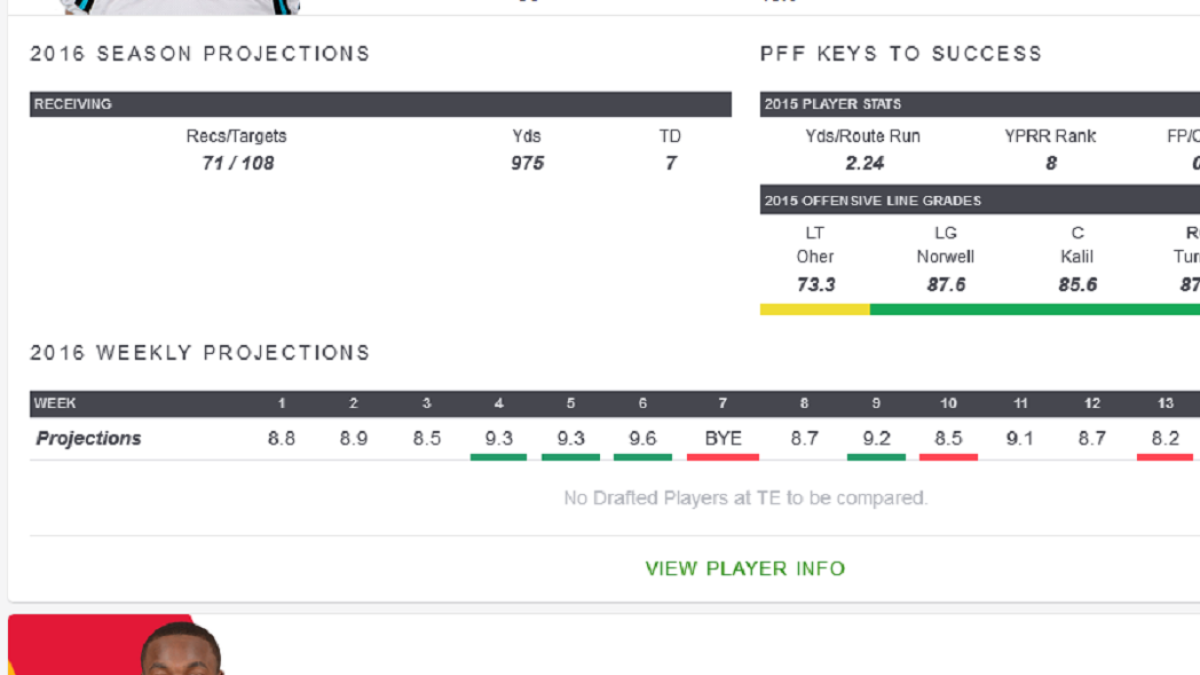
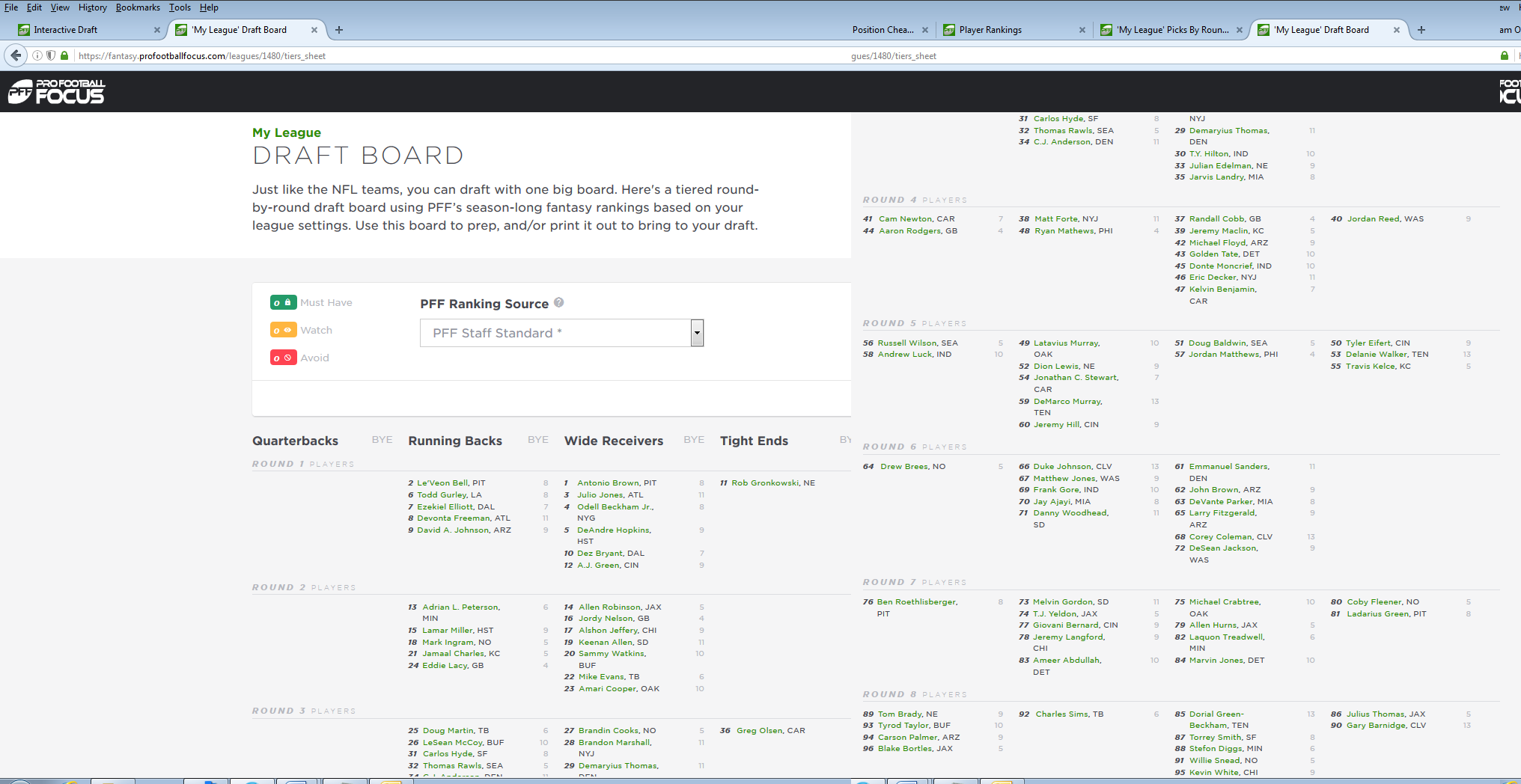
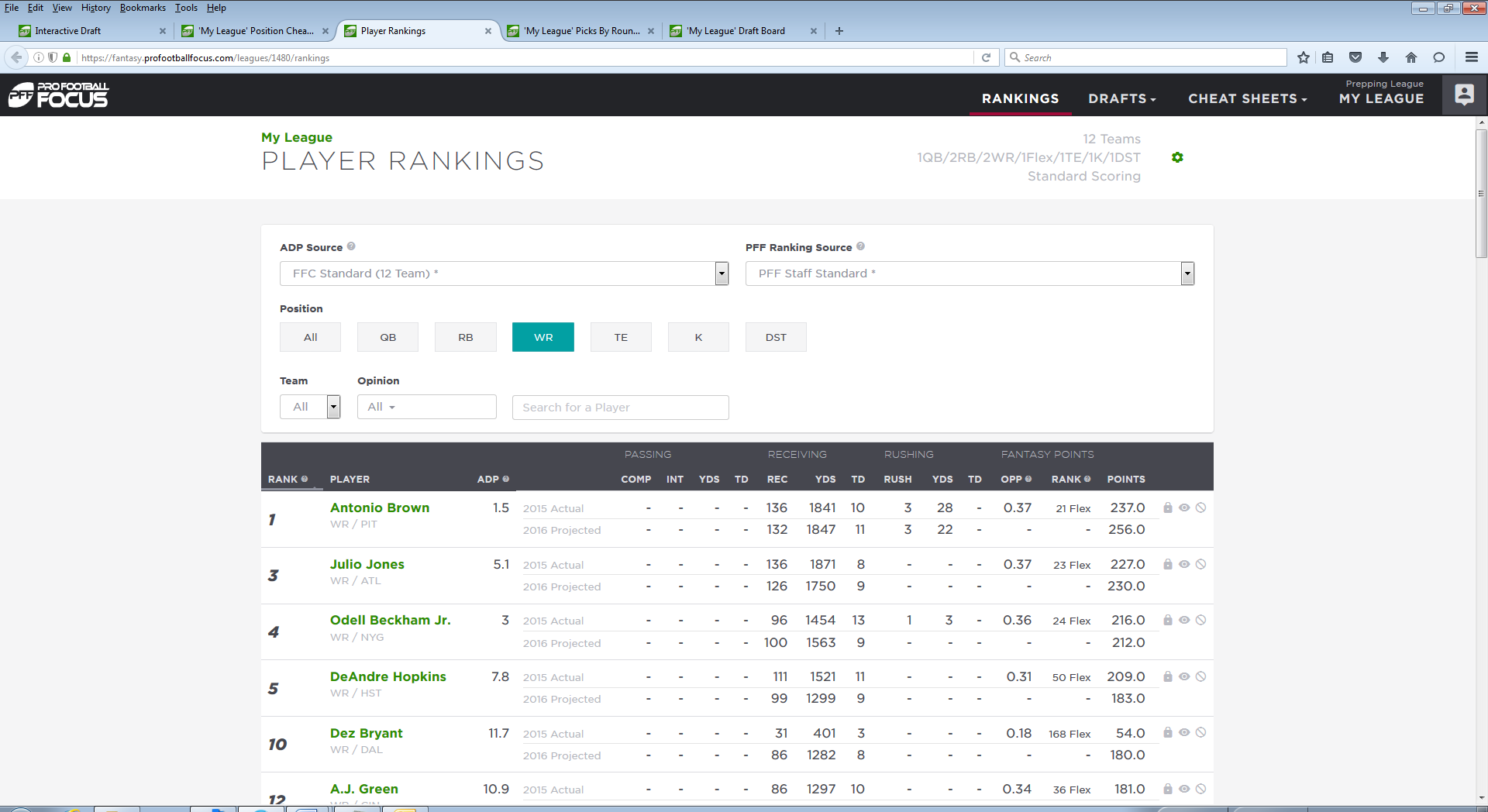
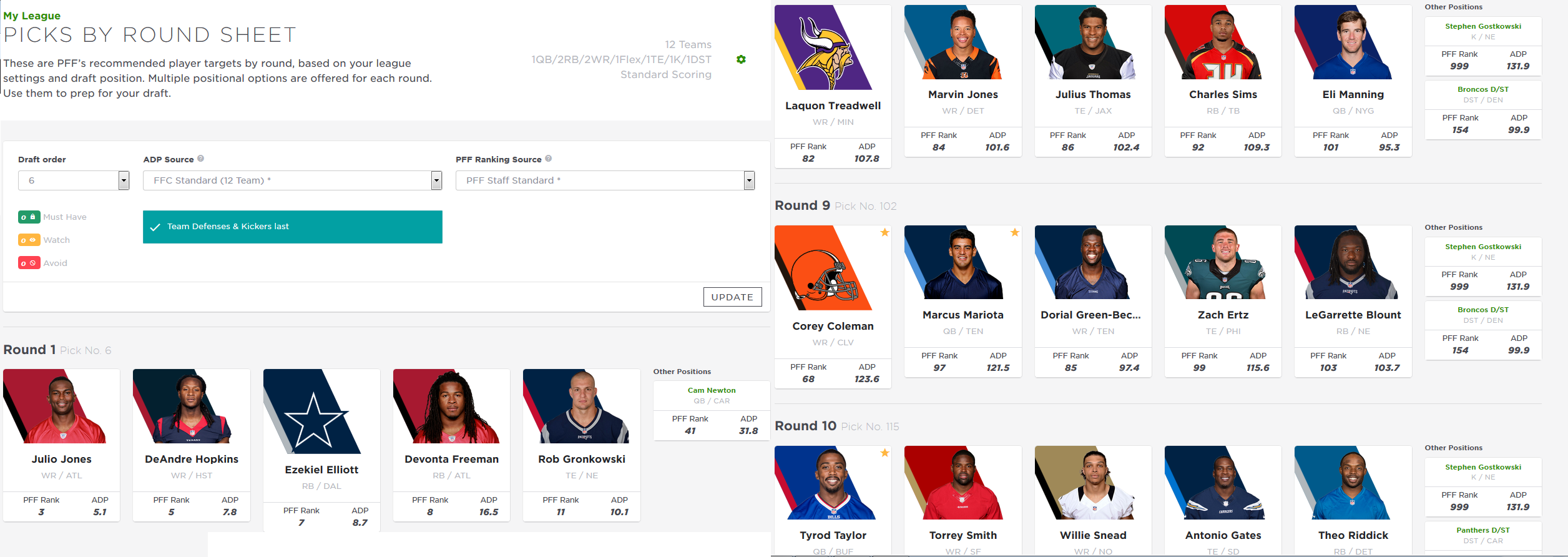
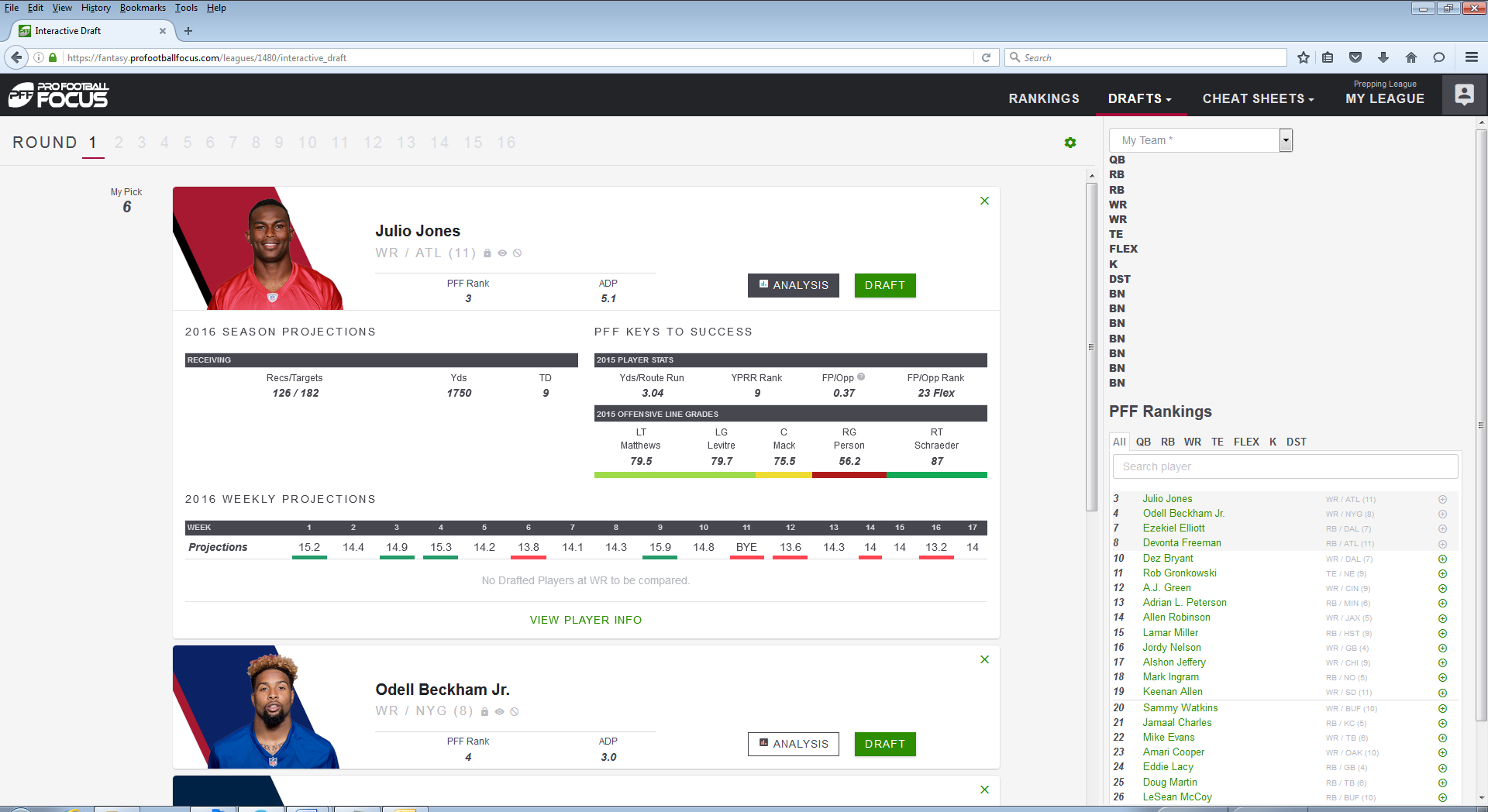
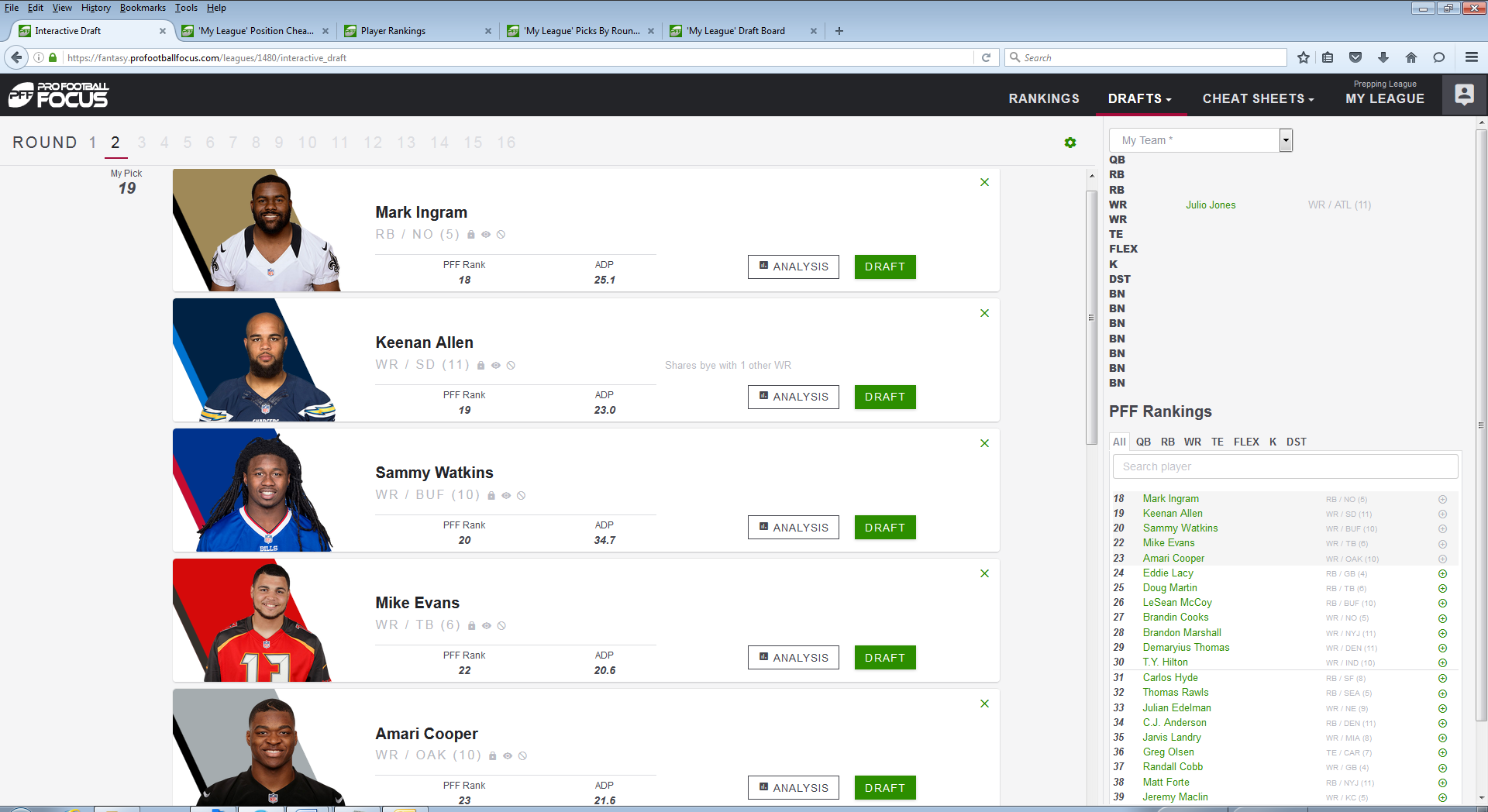
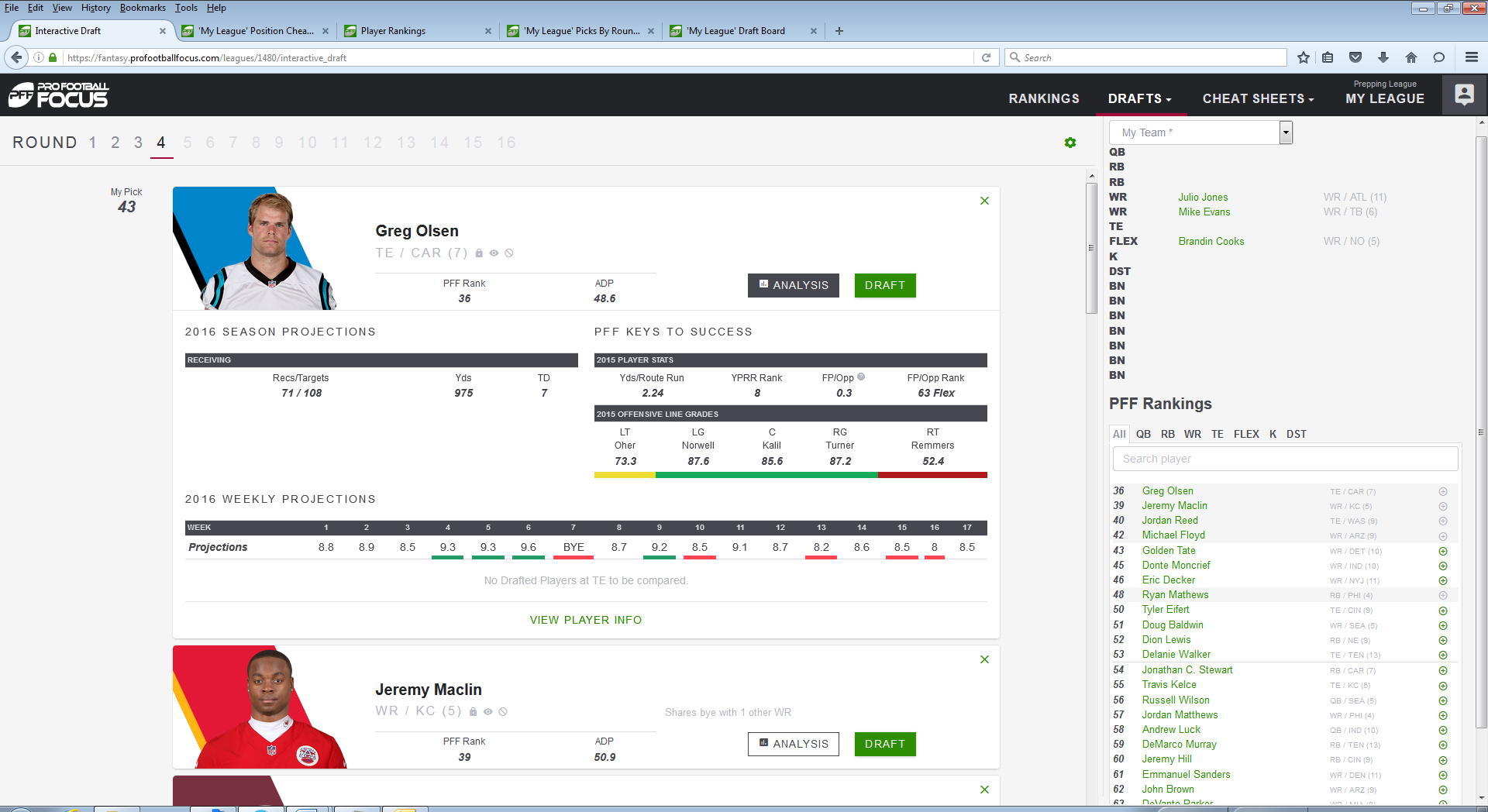
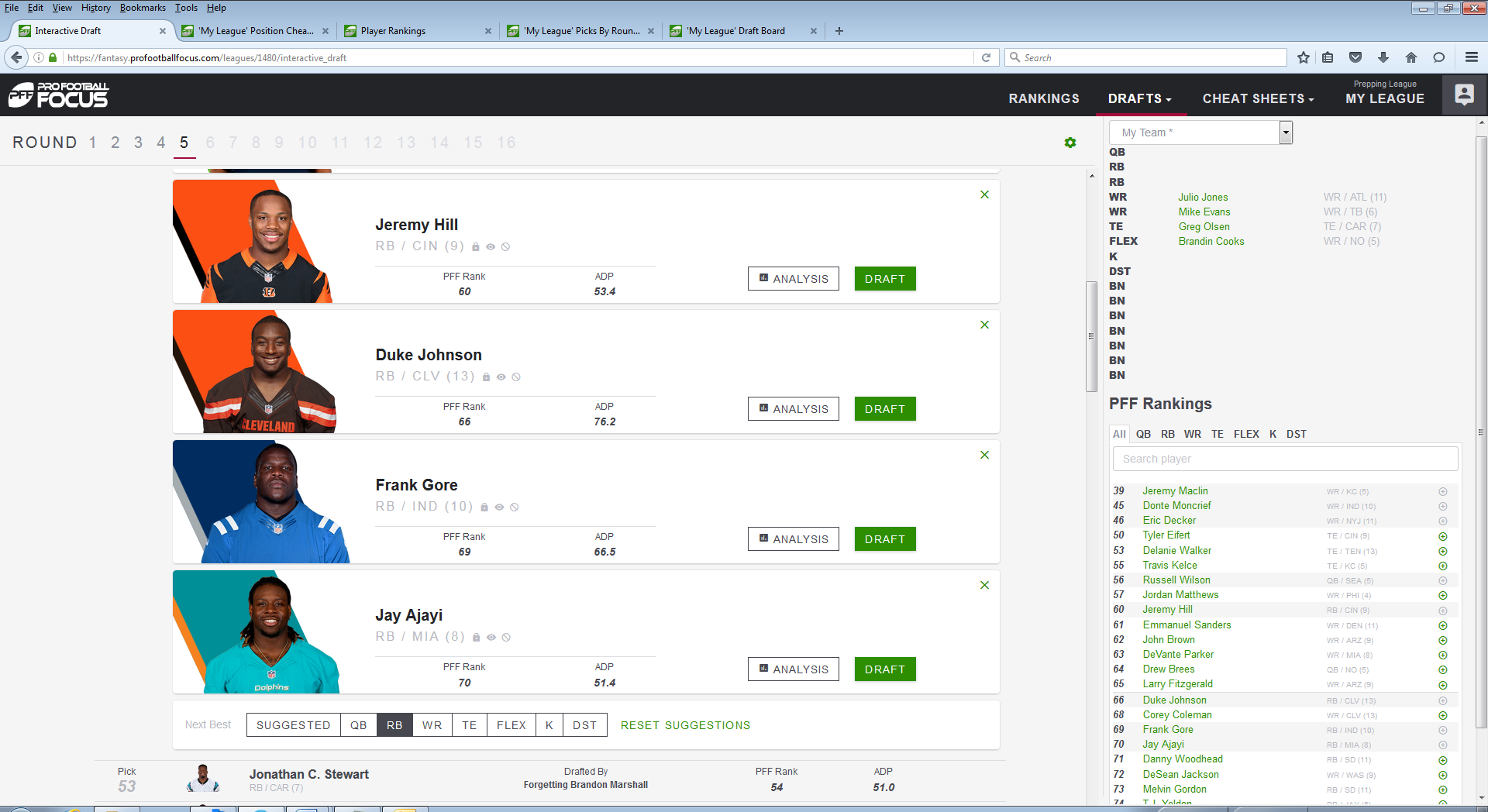
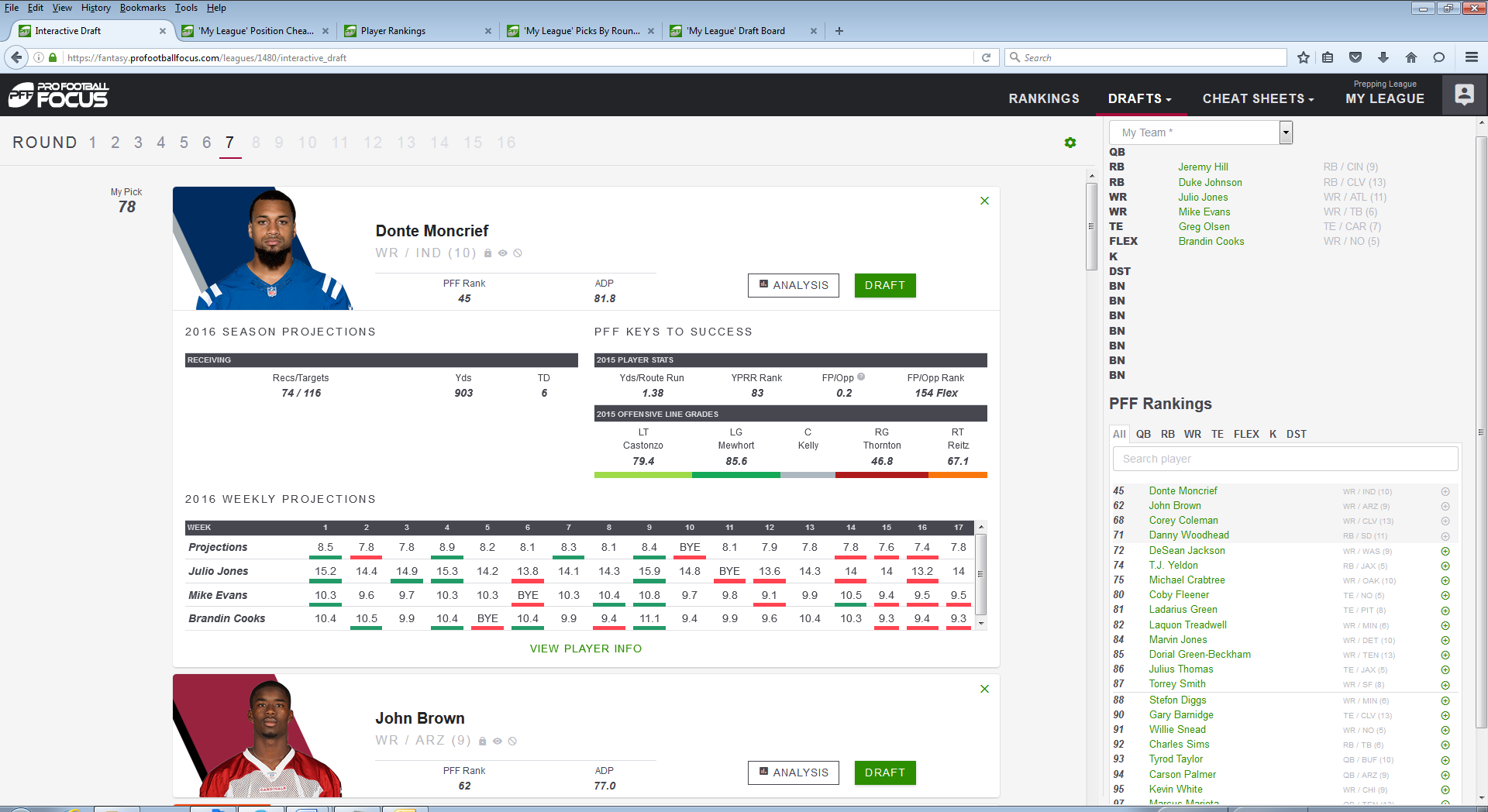
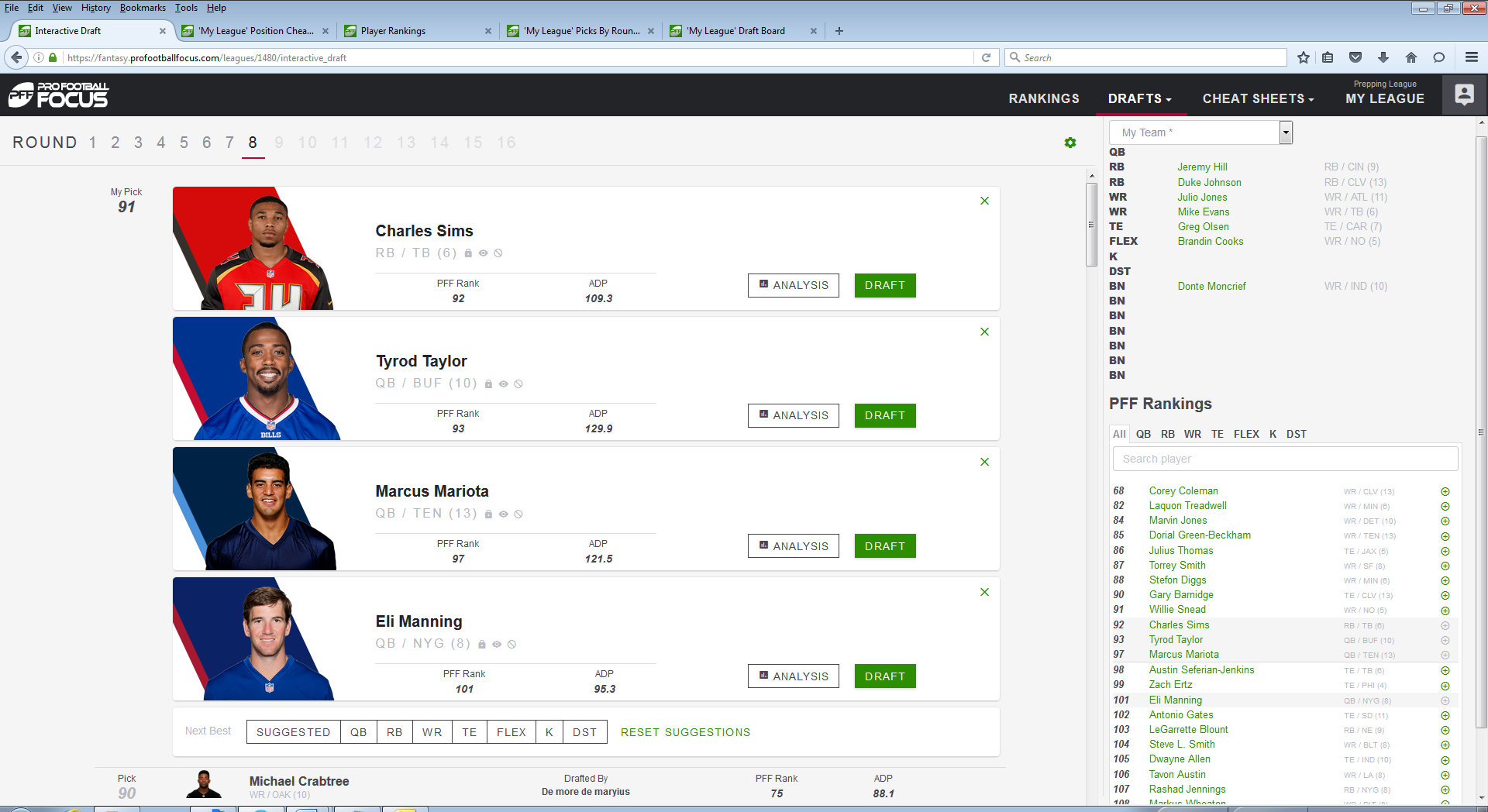
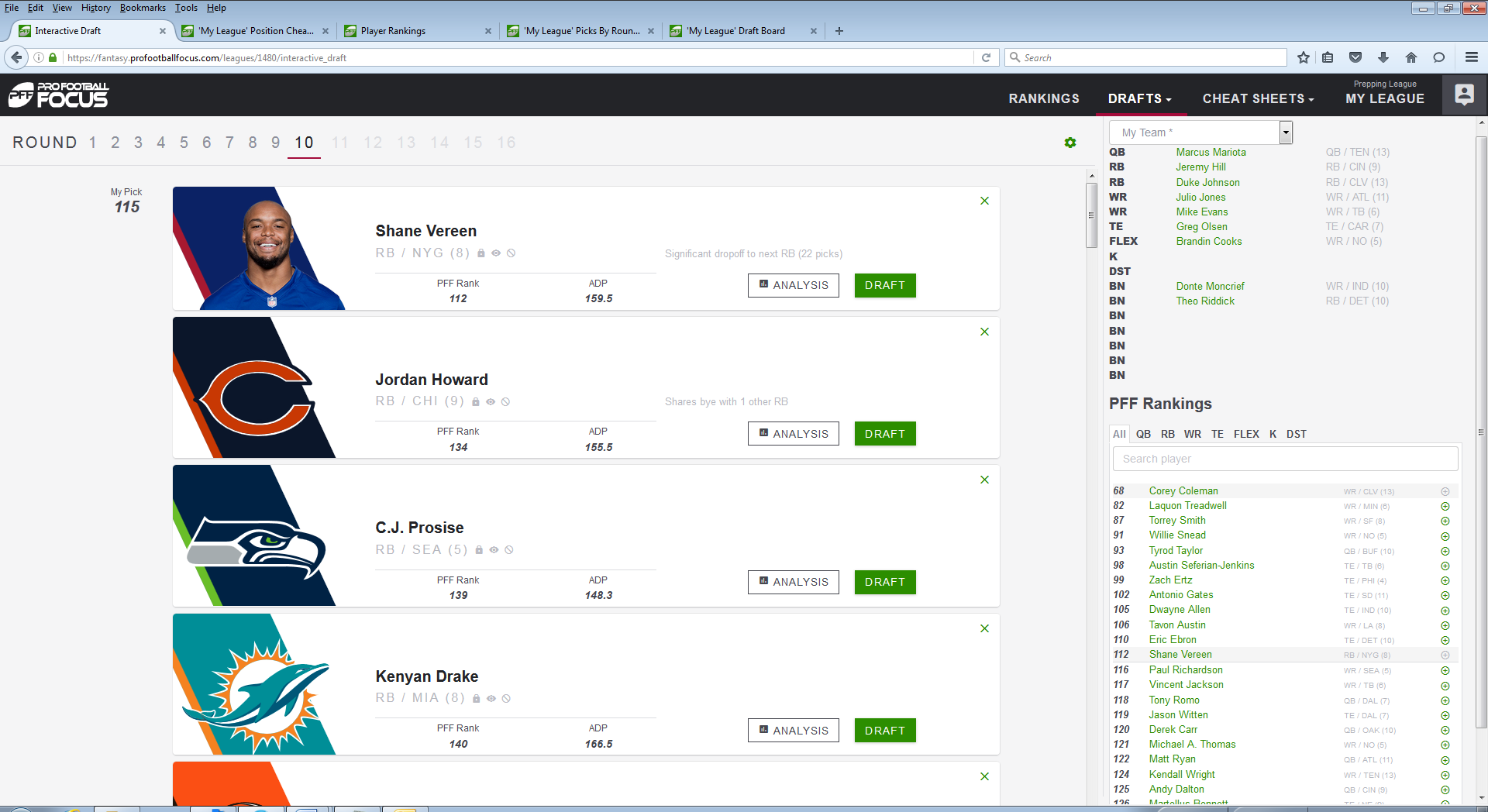
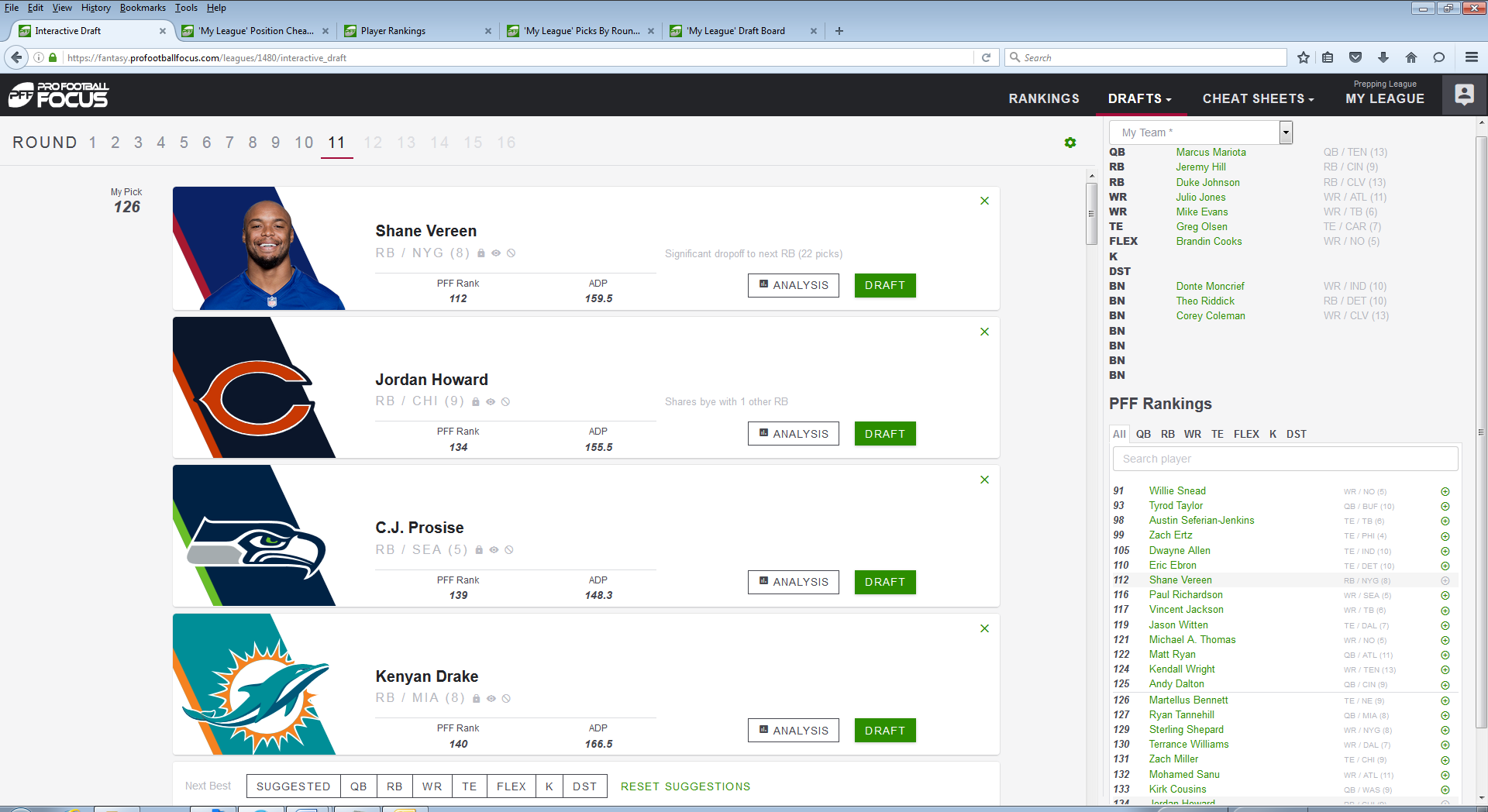

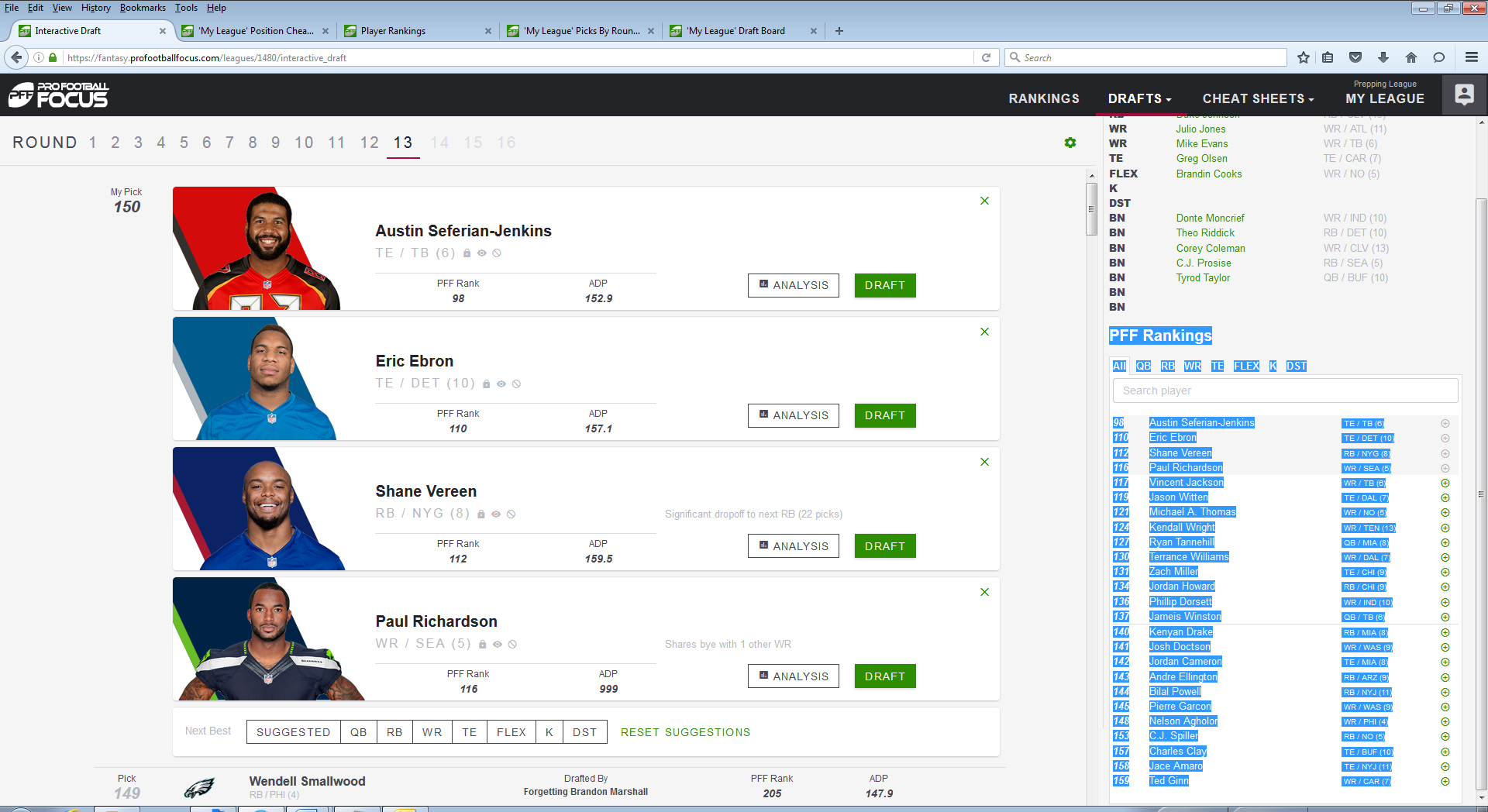
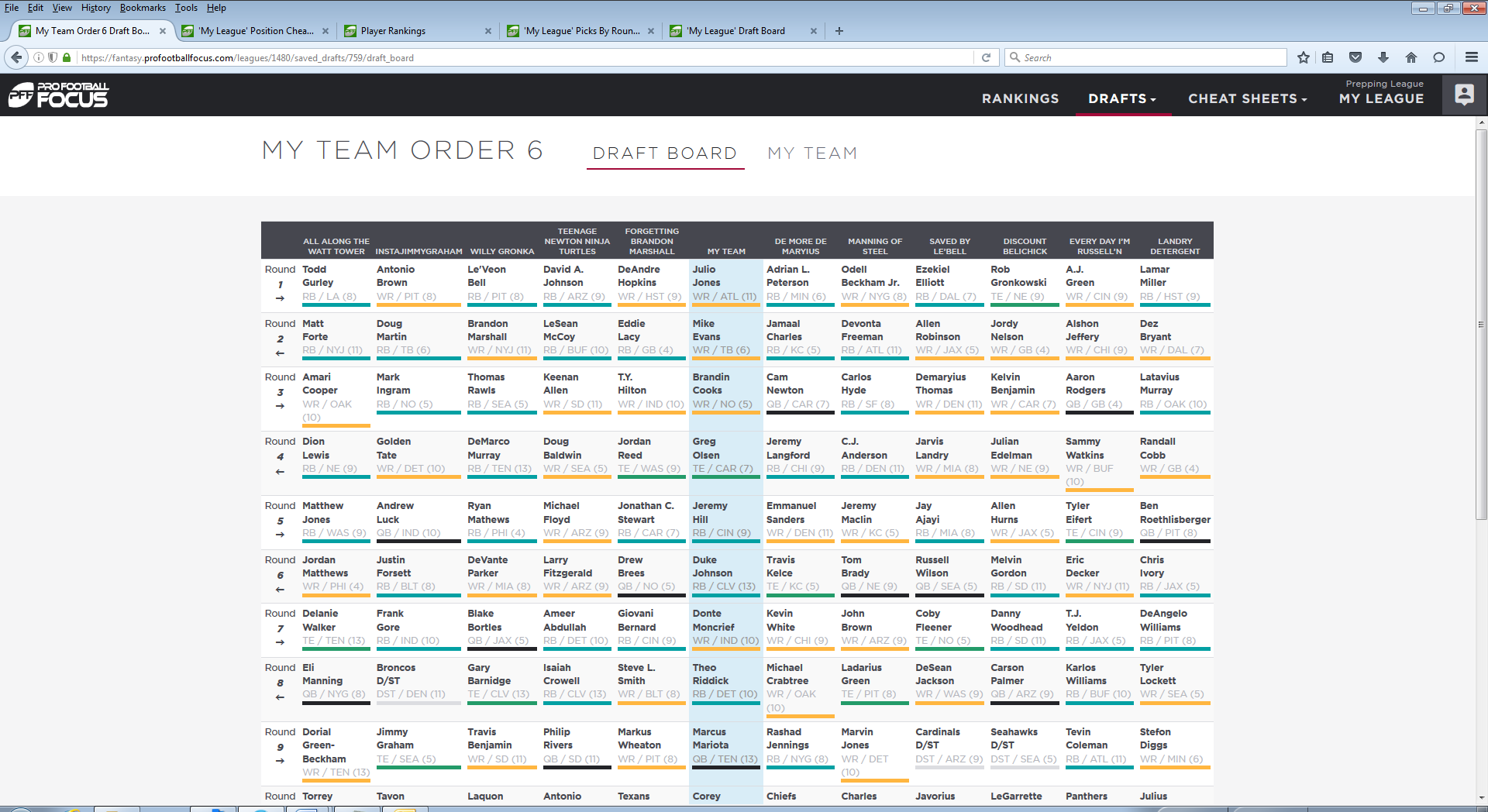
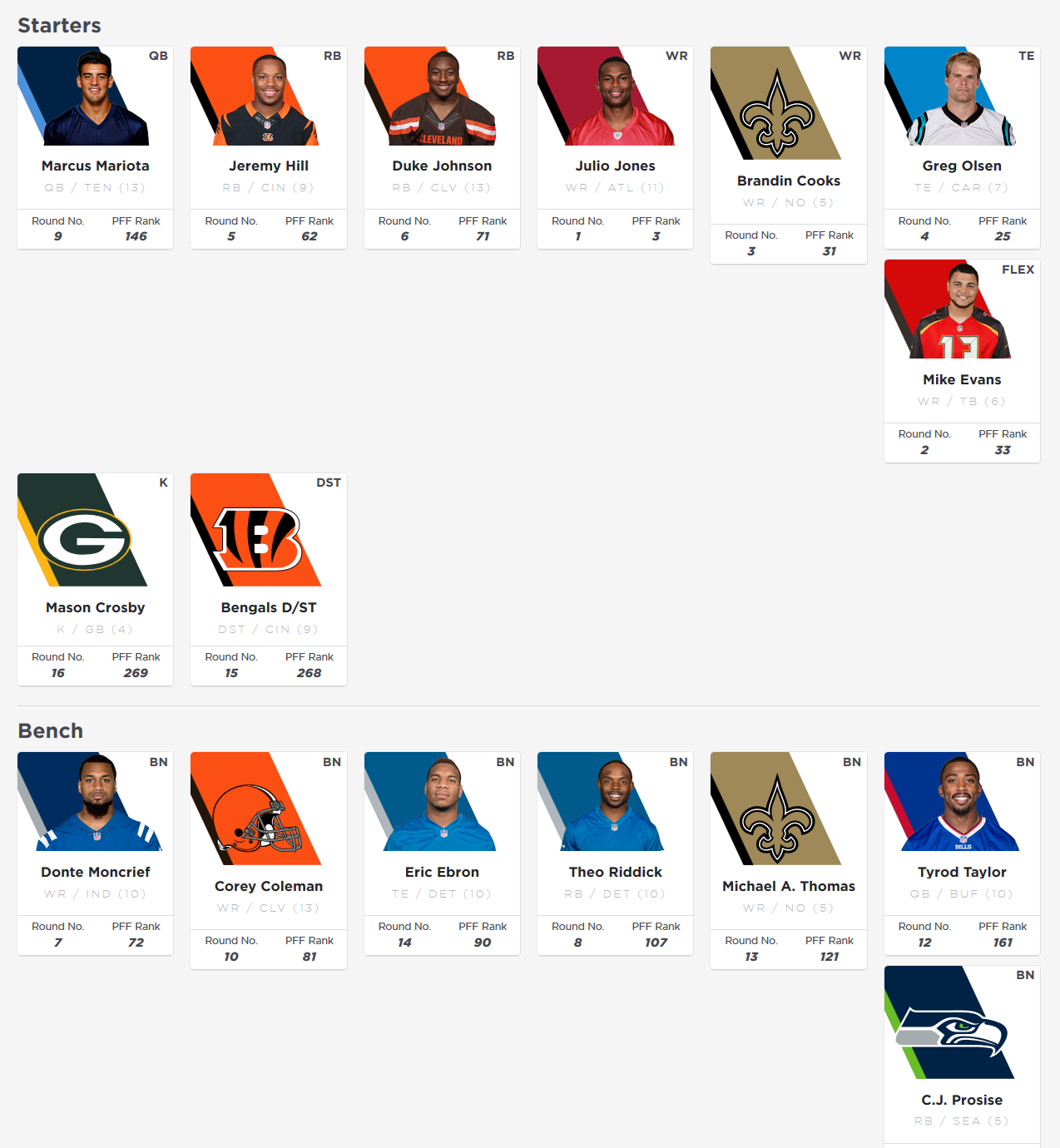

 © 2024 PFF - all rights reserved.
© 2024 PFF - all rights reserved.